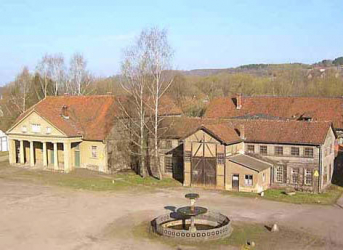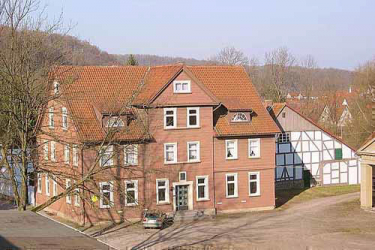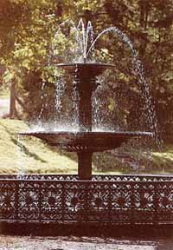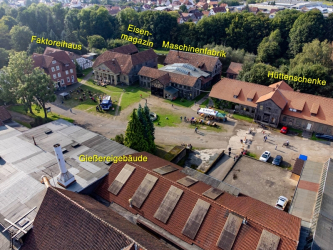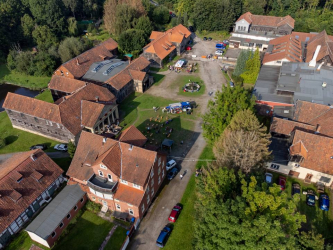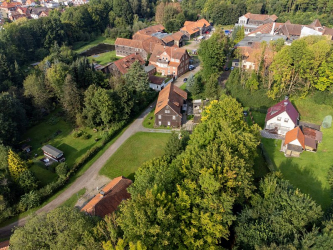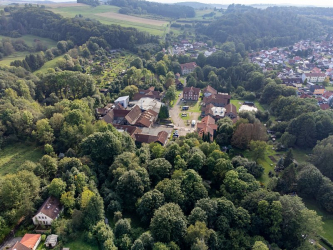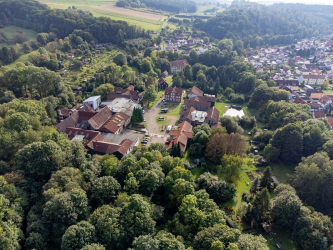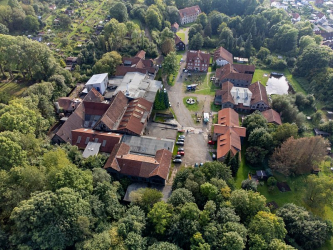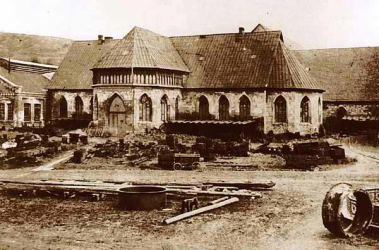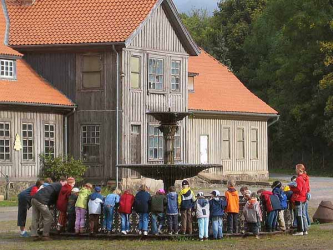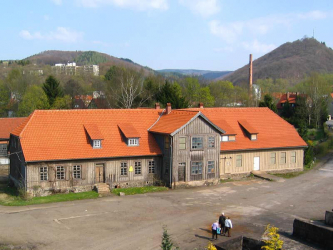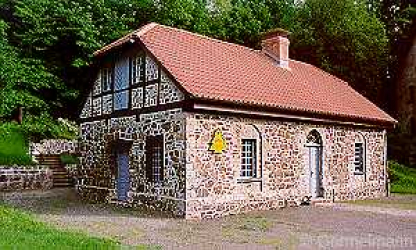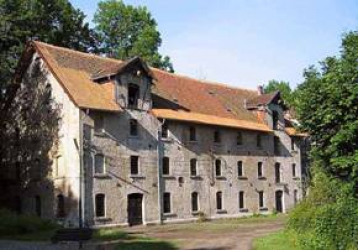The 'King's hut' (Königshütte) in Bad Lauterberg in the Harz Mountains is a former and once very important foundry and smelting works with buildings from the early 19th century. A few hut buildings still date from the 1st construction period around 1733. The historic foundry area was partially removed or built over in the course of extensions in the 20th century. Since October 2014 the 'Königshütte' has been recognized as a "cultural monument of national importance".
Since the beginning of ore mining in the Harz mountains, ironworks were built from the 16th to the 18th century. In the years 1733 - 1737, the Königshütte was built as a new smelting works near the village of Lauterberg. This was the largest iron and steelworks in the then Kurhannover state. The goods produced here were sold far beyond the borders of the Harz Mountains, including the wire for the world's first hitting (twisted) wire rope - invented in 1834 by Oberbergrat Julius Albert in Clausthal - and, of course, artistically decorated castings for everyday use and furnace construction. Famous visitors such as Goethe and King Jérôme, Napoleon's brother, as well as King Ernst August of Hanover and his son, King George V, appreciated the already then high-quality work of the royal smeltery.



